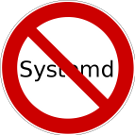Всех приветствую.
У наших инженеров образовалось свободное окно, которое можно потратить на разработку какой-нидь сложной электроники на заказ. Отбивать заказы на пищалки и ардуины не собираемся, а вот если нужно что-то сложное с ПЛИС, высокими частотами, ЦОС и т.д. готовы рассмотреть.



